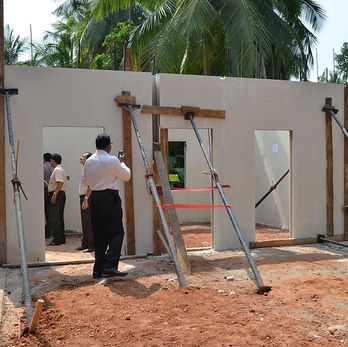Sustainable Living
The environment is undergoing significant changes due to human activities. Humankind has deliberately altered the surrounding environment to meet both immediate and long-term needs. Gone are the days when most houses had a kitchen garden with a vegetable patch and a few fruit-bearing trees. Many households also kept a cow and a few hens to cater to dairy and poultry needs. Farming and agriculture were the primary occupations for the majority of households. As we moved away from villages to set up life in large cities, we began living in apartments or houses with little or no space for gardening or farming.
Businessmen seized this opportunity and exploited the innocent people's needs for monetary gain. With the economic boom, the exploitation of natural resources commenced. The Earth's natural resources are crucial for the survival and development of the human population.
Sustainability isn’t merely a commodity; it's a lifestyle with immediate and long-term benefits. Sustainability involves forward-thinking, aiming to secure a future for you and yours, making things last, and improving upon what you’ve found. When one chooses to preserve and protect resources, minimize negative impacts on the earth, and nurture the planet and those around us, one embarks on the path of sustainability.
Individual Social Responsibility
Carbon Offsetting Contributions helps to combat global climate change as well as caring for local communities. A Carbon offset is a way to compensate for our emissions by doing an equivalent carbon dioxide saving elsewhere. Our Projects contributes to balance out a tiny bit of our carbon emissions.

What we do
Doing Our Small Bit: Our Commitment to a Sustainable Future.
01
Green Haven Initiative
Creating patches of greenery and fruit-bearing plants in urban areas offers significant environmental and community benefits. These green spaces improve air quality, support biodiversity, and provide natural beauty within our cities. For the community, they serve as accessible sources of fresh produce, promote healthier lifestyles, and create opportunities for social interaction and education about sustainable practices.
By integrating these green patches into our urban landscapes, we foster stronger, more resilient communities and contribute to the overall well-being of our environment.
03
Energy Conservation
It's fascinating to see how technology continues to reshape the energy landscape. The revival of Direct Current (DC) power is indeed a significant trend, driven by advancements in renewable energy technologies. Innovations in solar panels, wind turbines, and battery storage have made it more efficient to generate, store, and distribute electricity in DC form. This shift is not just about efficiency; it also aligns with efforts to reduce our carbon footprint and promote sustainable energy practices.
The transformation of our energy systems is a testament to human ingenuity and the ongoing commitment to creating a cleaner, greener world.
02
Waste Management
Zero Waste Management is a theory with multiple interpretations, but its core principle is clear: nothing should end up in landfills; everything should be reused or repurposed. Achieving 100% diversion from landfills is challenging due to varying Municipal Solid Waste Management techniques across cities.
Therefore, the best place to start taking practical steps towards zero waste is in your own home. By incorporating these practices, we can significantly reduce our ecological footprint.
04
Green Construction
Green construction, also known as sustainable building, involves designing and constructing buildings with minimal environmental impact. This approach emphasizes the use of eco-friendly materials, energy efficiency, water conservation, and waste reduction.
By prioritizing sustainability, green construction contributes to the preservation of natural resources, reduces greenhouse gas emissions, and promotes a healthier environment for future generations.
Many initiatives have been undertaken globally to construct affordable construction.























